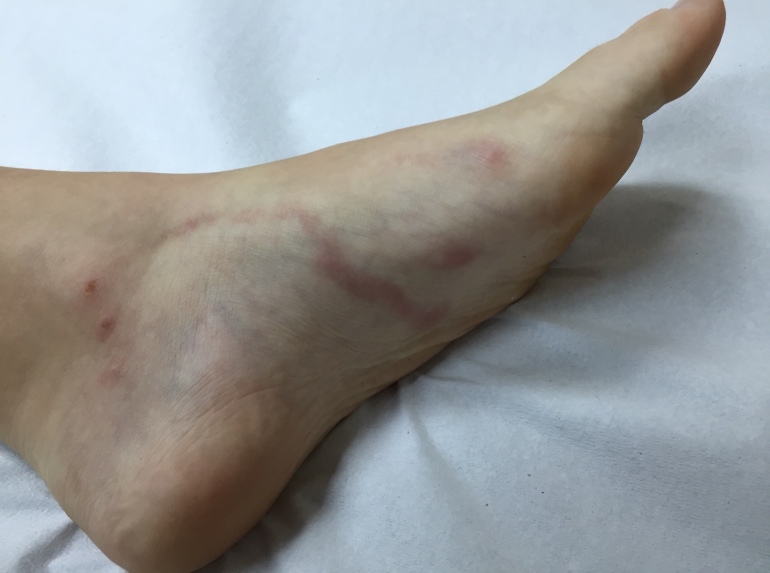Clinical Vignette 39
A teenager spent a few days at a regional resort, visiting the beach and trekking around the nearby waterfalls. Two days after returning, a unique rash appeared over the left foot, associated with an intense itch.
Question: What is the diagnosis and treatment of the rash?
[Updated 11 July 2015]
Quite a number of people on Facebook and in private comments have made the diagnosis of cutaneous larva migrans. I guess parasitic infections are just more interesting than just about any other type of infectious disease! The diagnosis is correct. Cutaneous larva migrans is caused by the larva of animal (most commonly dog) hookworms (Ancylostomatidae) that accidentally infect humans. Because humans are not the actual final hosts for these worms, the larva cannot do what they are born to do (apparently lacking the required enzymes to break down human collagen), which is to penetrate beyond the dermis into the deeper tissues (lungs or viscera) where they can mature into adult worms. There are several excellent reviews, the Medscape summary is here. So the larva (sometimes plural) burrow around the outer dermis, creating an intense itch and the typical serpenginous lesions as seen in the photo above.
The disease will resolve spontaneously after a few weeks (when the larva die), but anti-parasitic treatment will reduce the duration of itch and suffering. The current drug of choice is a single dose of ivermectin (occasionally second and third doses are required), and both albendazole and thiabendazole will also work well.
I have been told by a Dermatology colleague that cutaneous larva migrans is still seen in Singapore in persons that have not traveled. It may be prudent to walk barefoot around certain beaches in Singapore, especially where there is a high density of dog traffic.


Cutaneous Larva Migrans
LikeLike
Excellent! Clearly not “just” a neurologist, Nigel :-).
LikeLike
Hi! Dr Hsu, I am glad to find your article on cutaneous larvae migrans. May I know the name of the dermatologist you had mentioned? I need a 2nd opinion urgently. Many Thanks.
LikeLike